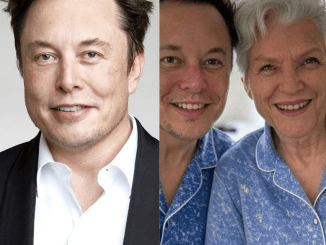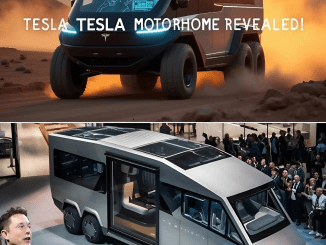Tesla Model S Plaid: Elon’s Insane Speed Machine Awaits!

When the first Tesla Model S Plaid roared onto America’s highways, the world’s collective jaw hit the floor. It wasn’t just another electric car. It wasn’t even just another Tesla. This was a 1,020-horsepower, tire-shredding, mind-bending, record-breaking monster—a machine so fast, so audacious, that it left even the most jaded car enthusiasts speechless. But what’s truly shocking isn’t just the speed. It’s how Elon Musk, the maverick billionaire with a penchant for the impossible, has managed to turn what was once a nerdy eco-car company into the most exciting name in automotive history. And the Plaid? It’s the proof—an electric supercar that’s not just rewriting the rules, but torching the rulebook.
Let’s get one thing straight: the numbers don’t lie. The Tesla Model S Plaid launches from 0 to 60 mph in—wait for it—1.99 seconds. That’s not just quick. That’s “blink and you’ll miss it,” “your brain can’t keep up,” “did the laws of physics just break?” quick. For years, the world’s fastest cars—Ferraris, Lamborghinis, Bugattis—have been the stuff of billionaire fantasy. Now, an all-electric sedan from California is eating their lunch. And it’s doing it while seating five adults in climate-controlled, vegan-leather comfort, with a panoramic glass roof overhead and a yoke steering wheel straight out of a sci-fi movie.
But the Plaid’s story is about more than just numbers. It’s about the shockwaves it’s sending through the entire car industry—and the questions it’s raising for everyone who thought they understood what a car could be. For decades, Detroit’s muscle cars and Europe’s exotics have dominated the conversation. Now, the conversation is changing, and it’s happening at lightning speed.
Step inside the Plaid, and you’re greeted by a cockpit that feels more like a spaceship than a sedan. There are no traditional gauges. Instead, a massive center touchscreen controls everything from navigation to Netflix. The controversial yoke steering wheel—no top, no bottom, just pure, unfiltered control—has divided critics. Some call it genius. Others call it madness. But one thing is certain: it’s impossible to ignore. You grip the yoke, press the accelerator, and the world blurs. The silence is eerie. No engine roar, just the faintest whine as the Plaid’s tri-motor setup hurls you forward with the force of a rollercoaster launch.

And then there’s the range. For years, critics have mocked electric cars for their so-called “range anxiety.” Not anymore. The Plaid will take you nearly 400 miles on a single charge—enough to drive from New York to Washington, D.C., with miles to spare. And with Tesla’s Supercharger network blanketing the country, a full recharge is never far away. The days of waiting hours for a charge are over. In less time than it takes to grab a coffee, you’re back on the road, chasing the horizon.
But here’s where things get truly wild. The Plaid isn’t just about speed and range. It’s about reimagining what a car can do. Over-the-air software updates mean your car gets better while you sleep. One day you wake up and—surprise—your Plaid has new features, faster acceleration, or even a video game you can play while parked. The car is alive, evolving, always one step ahead of the competition.
So why did Elon Musk do it? Why build a car that’s faster than a Bugatti, cheaper than a Porsche, and greener than a Prius? The answer is as audacious as the car itself: because he can. Musk has always believed in pushing boundaries, in proving the doubters wrong. When he launched the original Model S, critics laughed. When he promised to land rockets on ships, they scoffed. Now, with the Plaid, he’s not just silencing the critics—he’s daring them to keep up.
But there’s another, deeper reason, and it’s one that should make every American sit up and take notice. The Plaid isn’t just a toy for the rich. It’s proof that sustainable technology doesn’t have to be boring. For years, the green movement has been about sacrifice—smaller cars, slower speeds, fewer thrills. Musk is flipping the script. He’s making saving the planet sexy. The Plaid is a flex, a status symbol, a conversation starter. It’s the car you buy when you want to show the world you care about the future—but you’re not willing to give up the thrill of driving.

Of course, the Plaid has its critics. Some say it’s too expensive for the average American. Others question the safety of such insane acceleration on public roads. And yes, the yoke steering wheel takes some getting used to. But for every skeptic, there’s a legion of fans. The waiting list stretches for months. Social media is flooded with videos of stunned passengers, their screams and laughter echoing through the internet as the Plaid launches like a rocket.
What’s next? If history is any guide, Musk isn’t done shocking the world. Rumors are swirling of even faster Teslas, of self-driving technology that could make human drivers obsolete. But for now, the Plaid stands alone—a symbol of what’s possible when you refuse to accept limits.
And perhaps that’s the most shocking part of all. In a world obsessed with nostalgia, with holding on to the past, the Plaid is a glimpse of the future—a future where speed, luxury, and sustainability aren’t mutually exclusive, but inseparable. It’s a challenge to every carmaker, every engineer, every dreamer: if you want to change the world, you have to be willing to break the rules.
So the next time you see a Tesla Model S Plaid glide silently past you on the highway, remember: you’re not just looking at a car. You’re looking at a revolution on wheels. And if you’re lucky enough to get behind the yoke, hold on tight. The future is here, and it’s faster—and more shocking—than anyone ever imagined.


